‘We are forgotten here’: As NYC builds seawalls, this Queens community feels left behind.
A decade after city officials promised to cut flood risks in the Edgemere neighborhood, critics say it remains just as vulnerable.
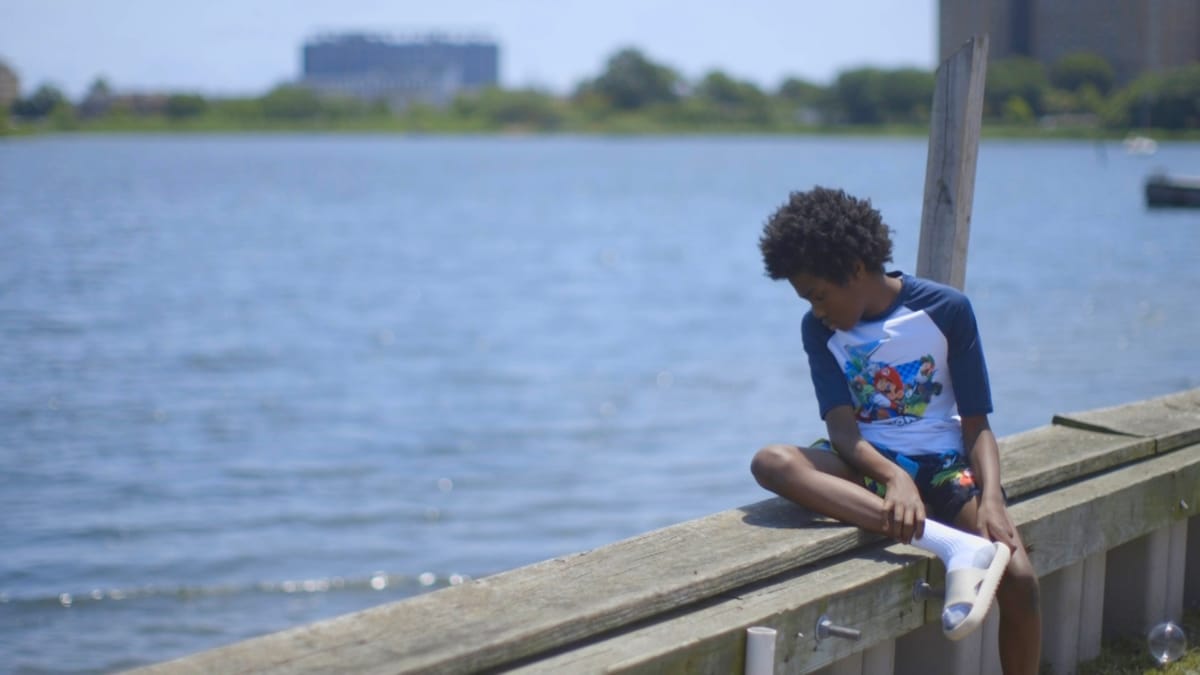

This article was produced in partnership between Floodlight and New York Focus. It was co-published by The Guardian and republished by TruthOut,
Baba Ndanani has lived in one of New York City's most flood-prone neighborhoods for more than 20 years, and he knows the risks all too well. His two-story home in the coastal community of Edgemere sits directly beside Jamaica Bay. During high tides, he often watches with concern as the bay creeps into his backyard and climbs the steps to his back porch.
In 2012, during Superstorm Sandy, over 5 feet of water rushed into Ndanani’s house. He had to swim across the street to higher ground, riding out the rest of the storm in a disabled car surrounded by water.
“I was praying,” Ndanani told Floodlight. “I just wanted to get out, and that was it.”
After the storm, he returned to his decimated home and spent two weeks sleeping atop an overturned refrigerator.
“There was nothing else for me to sleep on. I had nowhere else to go.” Ndanani said. “It was horrible.”
Despite his harrowing experience and a city-run voluntary buyout program designed to relocate residents of Edgemere, he says he has no intention of leaving his coastal home.
“Even with everything that happened, I love the scenery, I love the environment,” he said.
Instead, Ndanani is among the many Edgemere residents still holding out hope the city will deliver on its decade-old promise to protect the neighborhood from flooding.

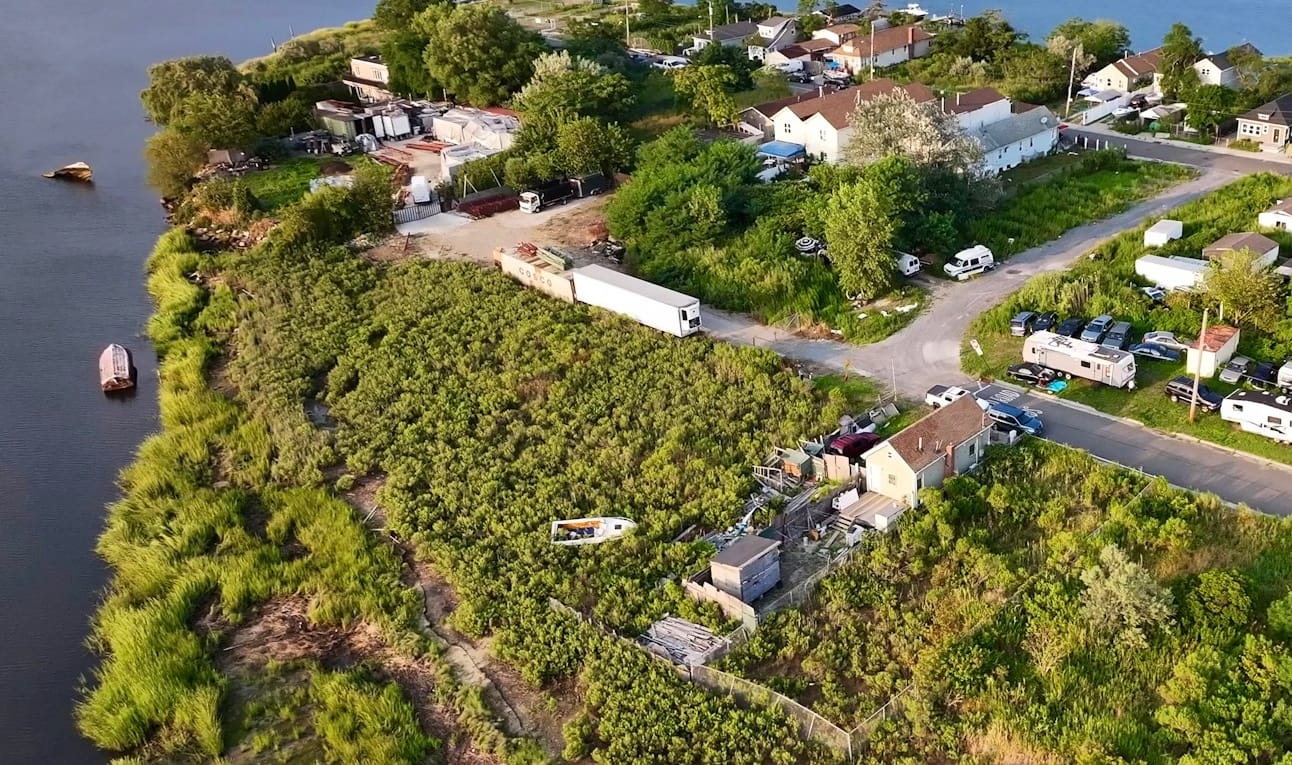
Left: Baba Ndanani has lived in one of New York City's most flood-prone neighborhoods for more than 20 years. During high tides, he often watches with concern as Jamaica Bay creeps into his backyard and climbs the steps to his back porch. | Right: Remnants of the destruction of 2012’s Superstorm Sandy, including debris and a scuttled boat, still lay beside Baba Ndanani’s home on Edgemere’s bayside peninsula. Ten years after city officials pledged to raise Edgemere’s bayside shoreline, the project has yet to break ground. (Evan Simon / Floodlight)
“In the other neighborhood(s) they've done that, so why is Edgemere different?” Ndanani asked, referring to the city’s efforts to raise shorelines around Lower Manhattan. “Because we don't have Wall Street here?”
The lack of flood protections in Edgemere, combined with a largely ineffective attempt to relocate residents in the working class minority neighborhood, reflects a wider trend among coastal resiliency efforts currently underway across America’s cities. In Charleston and Miami and Norfolk, city officials are planning billion-dollar seawalls to protect their wealthy core, but not the vulnerable communities beyond it.
“Neighborhoods like Edgemere will become more and more frequent,” Veronica Olivotto told Floodlight. Olivotto is a New School researcher who spent months studying flood risk mitigation efforts in the community.
She says Edgemere illustrates how managed retreat from an increasingly uninhabitable coastal America “will have to confront the fact that some people cannot move either because they don’t have the financial means or because they feel that this is the place they have always lived.”
Olivotto stressed: “We need to think way more about the land that’s left behind, and the people that are left behind after retreat than we are right now.”
The working class community of Edgemere is among New York City’s most flood-prone neighborhoods, yet residents say they’ve been largely left out of the city’s coastal defenses. (Evan Simon and Jeffrey Basinger / Floodlight)
‘We are forgotten here’
With more than 500 miles of waterfront, few American cities are more vulnerable to sea level rise than New York City. About 1.3 million New Yorkers live within or directly adjacent to a floodplain, and a recent report estimates more than 80,000 homes could be lost to flooding in the next 15 years. By 2050, city officials estimate that at least 800,000 residents will be living in a high risk floodplain. By 2080, nearly a third of the city’s landmass could face significant flooding.
New Yorkers got a terrifying glimpse of what’s to come in 2012, when Superstorm Sandy flooded 17% of the city’s landmass, killing 43 people and causing more than $19 billion in damage.
Officials have been scrambling to make New York more resilient to rising waters ever since. The city has begun raising shorelines and installing massive floodgates around Lower Manhattan as part of the so-called Big U, a 10-mile-long U-shaped system that also includes mitigation features aimed to protect the island’s southern tip from future floods.
The estimated $2.7 billion project is among the most ambitious coastal protection efforts in the nation. But for many of New York’s working class coastal residents, is just another city service they aren’t seeing in their neighborhood.
“Everybody deserves the same amount of protection,” Edgemere resident Jackie Rogers told Floodlight. “If they can invest in other communities, raising up the shorelines, putting berms in the communities that’s along the Lower East Side, as well as the Hudson River, why can't they do the same thing to Edgemere?”
Unlike Lower Manhattan, Edgemere was among the hardest hit communities during Superstorm Sandy. A low-lying neighborhood located along a narrow stretch of the Rockaway peninsula, Edgemere is flanked by the Atlantic Ocean on one side and Jamaica Bay on the other. When Sandy struck, water rushed in from both sides, filling the streets with nearly 6 feet of water.
“We were actually in the ocean at the height of Hurricane Sandy,” Edgemere resident Sonja Webber-Bey told Floodlight. “The ocean and the bay were one in the same. So whatever was in your house was the ocean and the bay.”
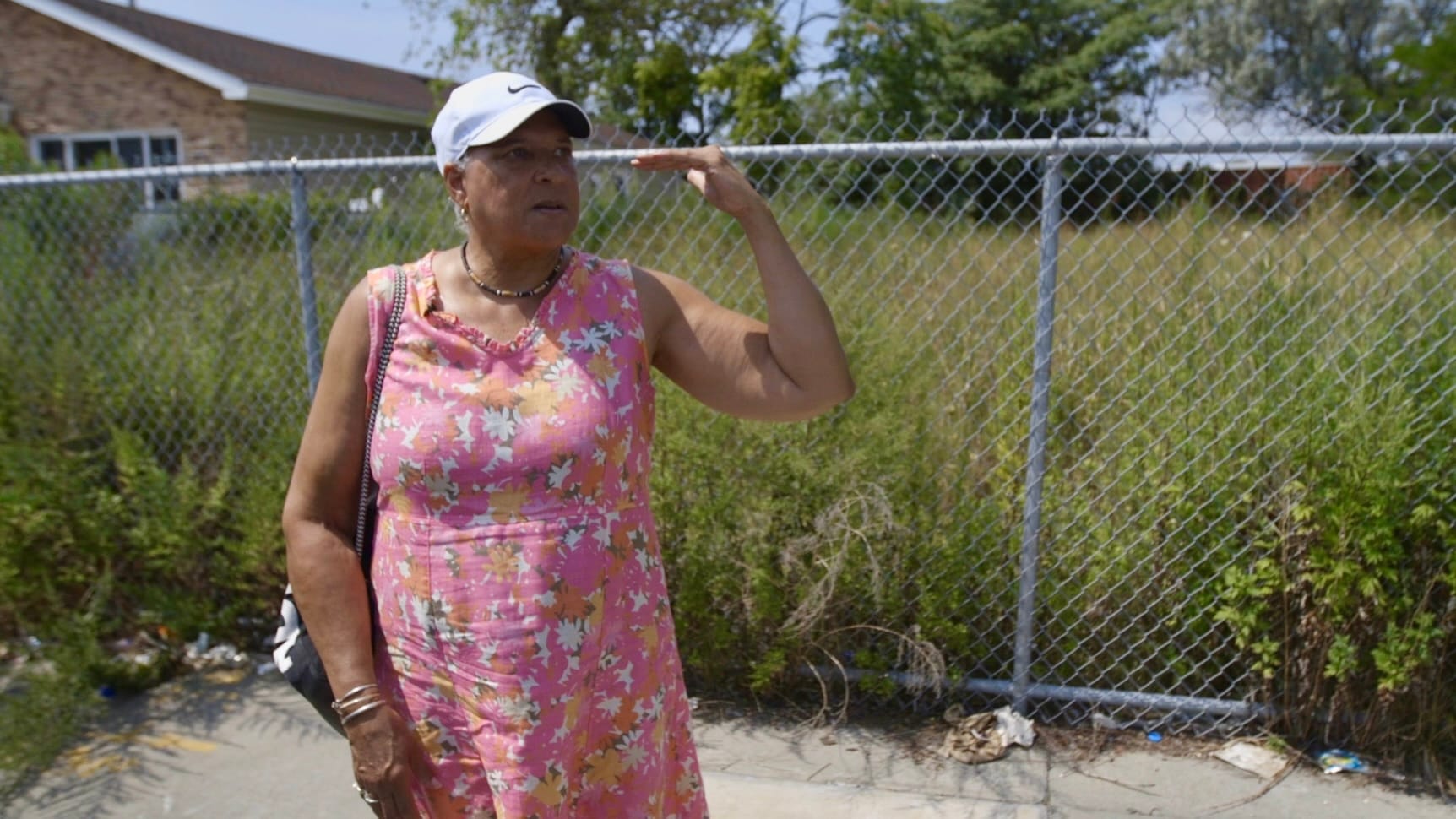
Yet more than a decade after city officials pledged to fortify Edgemere, critics say little has been done to protect the community from flooding.
“Edgemere, especially the portion towards the bay, is still highly vulnerable,” Olivotto said. “If a superstorm were to happen next month, the same exact issues would occur in Edgemere as they occurred in Superstorm Sandy.”
In 2015, the city began working on the Resilient Edgemere Community Planning Initiative. The goal was to reduce flood risks in Edgemere while also bringing in affordable housing. But a decade later, the plan’s major resiliency project has yet to break ground.
While the city upgraded drainage systems, elevated more than 100 homes and rebuilt the boardwalk to help fortify Edgemere’s oceanside, a crucial protection feature to raise the shoreline along the bayside was dropped.
“It’s 13 years since Superstorm Sandy, and yet still no flood mitigation on the bayside,” Rogers said. “We are forgotten here.” The city’s original plan earmarked $14 million for raising the bayside shoreline.
“That money was taken away from Edgemere without Edgemere community members knowing about it and reallocated to another community. We want that money back. We want it reinvested back in our community. We want our shoreline to be raised,” Rogers said.
Official: Residents ‘are right to be concerned’
“I understand the frustration of Edgemere residents and I think that what we're talking about with this plan is really challenging compromises,” Michael Sandler, associate commissioner at the NYC Department of Housing Preservation and Development, told Floodlight.
“The plan will be a success,” said Sandler, whose agency is responsible for the effort. “I don't consider the plan to be complete. And I think the plan has taken much longer to implement than we would have preferred.”
Key setbacks, he said, such as “continuity of staffing at the agency” as well as the loss of funding during the COVID-19 pandemic contributed to the delays. Still, Sandler recognizes that Edgemere remains far too vulnerable.
“We're coming up on the peak of hurricane season right now, and there isn't a coastal protection feature, and I think that residents in the neighborhood are right to be concerned about what the future looks like,” Sandler said in a September interview. He added, “I think that we have invested a lot in the community. We have a lot in the works right now that is coming in terms of community improvements.”
The city now relies on a federal Army Corps of Engineers project to protect Edgemere’s bayside. However, the project has remained in the design phase for years, and with the Trump administration’s posture towards climate change, few in Edgemere expect the project to move forward anytime soon.
“It's not happening,” Edgemere resident Rogers said of the Army Corps project. “Nobody is looking to do anything along this bay to address the constant flooding of Jamaica Bay.”
Sandler says there is federal funding for the project, and it is moving forward, but he acknowledges residents’ frustration.
“These are really big, complicated projects, and the city does not have the full resources for all of the coastal protection projects that are necessary to protect the city from climate change,” Sandler said. “And we have a partner in the federal government who is overall pulling back from this work and from their financial commitment to resiliency. And so it is a really big challenge for New York City.”
Caught between the housing and climate crises
Despite the lack of flood protections in Edgemere, the city has approved construction of new affordable housing towers in the area. One building is completed, and several other towers are slated for construction. All are in or adjacent to floodplains; sea level rise projections show they could be partially underwater by 2100.
“The fact that Edgemere may be considered as the last bastion of affordable housing in New York City, considering all the flood-prone issues that it has, I think is ridiculous,” Olivotto said.
Officials stress the city’s need for affordable housing and that apartment towers in Edgemere will be less flood-prone than one- and two- story homes. But Olivotto notes Edgemere has only one main road and one subway line for evacuation in the event of a flood.
“If the subway is down and your car is submerged in water, people will not be able to evacuate,” she said. “ So your property may be safe because you are in a tower, but you might not be able to have access to services that you need, food, health care, etc. So I think the idea of bringing new homes to Edgemere needs to be rethought.”
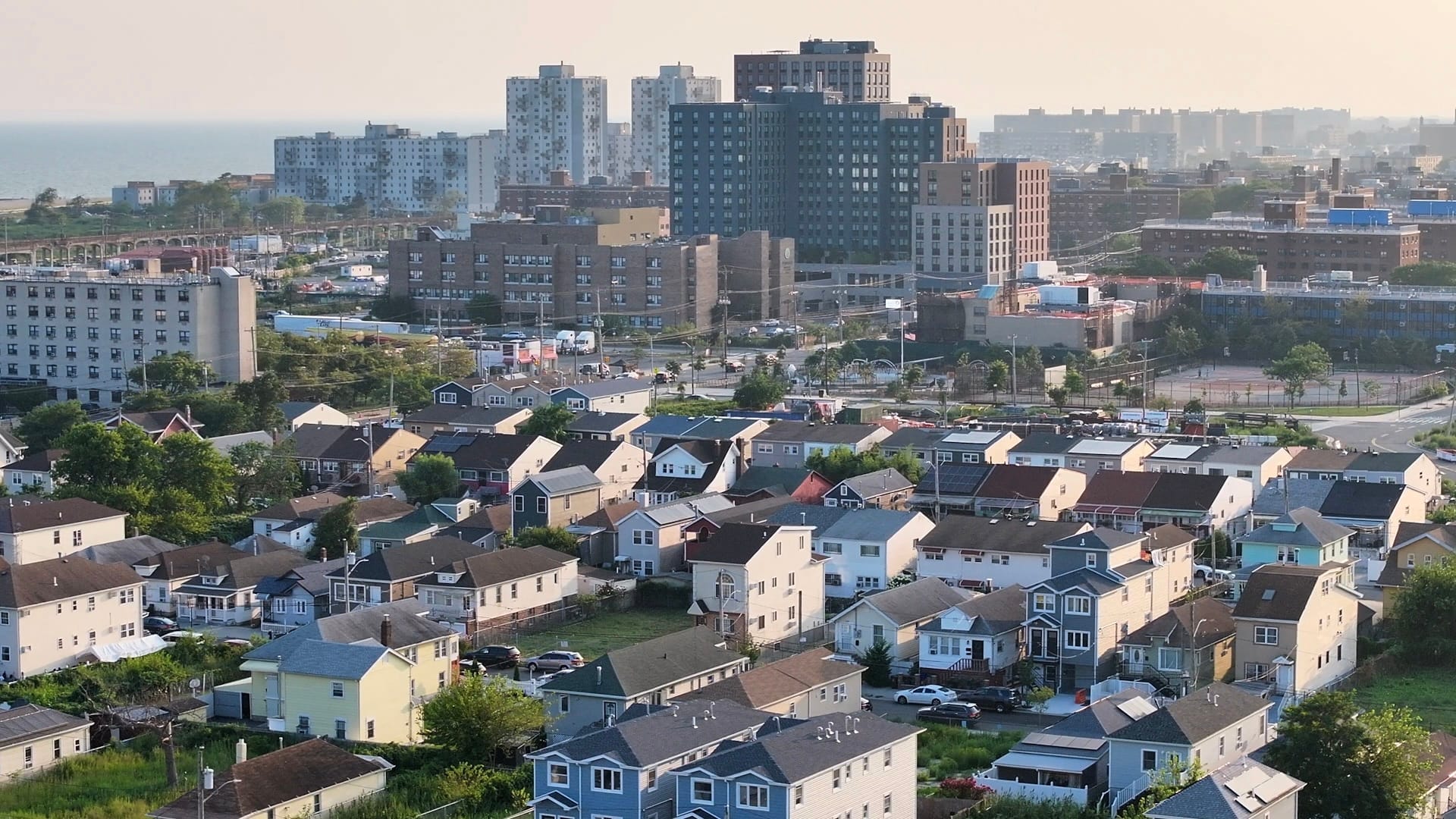
Bringing more affordable housing to Edgemere continues a nearly century-old tradition of trying to concentrate low-income residents in public housing along the city’s perimeter.
It began in the 1930s under the infamous city planner, Robert Moses, and has resulted in thousands of working class New Yorkers living in vulnerable floodplains across the city. Under Moses, New York City bought swaths of land in Edgemere and bulldozed homes to make way for public housing towers. Some got built, but many of the city lots remain empty, despite multiple urban renewal projects in the ensuing years.
“All of the services that were promised as part of the urban renewal were also not delivered,” Olivotto said. “So many people moved in the area and were able to access some of this housing, but none of the schools or health care services that a community needs.”
Rogers moved to Edgemere in 2007 through a city-run affordable housing initiative under the administration of then-Mayor Michael Bloomberg. “There were promises of supermarkets, promises of retail stores, shops. Nothing. Nothing came,” she said.
Rogers also says she wasn’t fully informed about the flood risks in the area before moving there. “Nobody ever said that in a couple of years this community would be underwater,” she said.
“Seeing these lots vacant is very depressing to me,” Rogers added. She has watched as people from outside the community dump garbage on the lots, which she says are poorly maintained by the city, with overgrown grasses forcing pedestrians off the sidewalk and into the street.

“Just to have a sidewalk, just to have the basic things that most communities should have is a fight,” Rogers said. “Why does everything have to be a fight in this community? All we want is to live a decent quality of life.”
The lack of services, coupled with the city’s attempt to relocate some residents along the bayside through a voluntary buyout program, has sparked concerns that officials are trying to push out Edgemere’s long-time residents.
“They're developing the whole neighborhood, but I don't think they're building for the people that already live here,” said Webber-Bey, who has lived in Edgemere for nearly 50 years. “I think people feel they just want our land and then they're going to build something that's three or four times as expensive and build a whole new community on the coast.”
NYC’s first try at coastal retreat struggles to take root
Another goal of the 2015 Resilient Edgemere Community Planning Initiative was to relocate some of the community’s most vulnerable residents through a voluntary buyout program.
“We were really pulling back and trying for the first time in New York City some form of managed retreat from the shoreline,” Sandler said.
The city established a Hazard Mitigation Zone in Edgemere along Jamaica Bay where it limited development and offered to buy people’s homes in exchange for moving elsewhere. Ultimately, only seven of the approximately 50 eligible homeowners participated in the buyout program.
“We saw a mixed uptake. We had homeowners who were not interested in leaving. And I think you see (that) in most buyout communities around the country,” Sandler said.
“They’ve been neglected in the past and they see retreat as a new sign that the city just doesn't want to invest in this neighborhood,” Olivotto said. She added it's important the city takes steps “to try to regain trust of the citizens of Edgemere.”
Despite Edgemere’s vulnerability to flooding and the lack of coastal protections, few of the residents interviewed for this report expressed any interest in leaving.
“It is still one of the hidden gems in New York City, even with all the vacant lots, with all the mosquitoes. It's quiet. You can hear yourself think at night,” Rogers said.
Research shows she is far from alone. Less than 10% of Americans who experience a natural disaster decide to relocate, according to one study. For most, it's simply too difficult to leave the economic, social and cultural networks they’ve built their lives around.
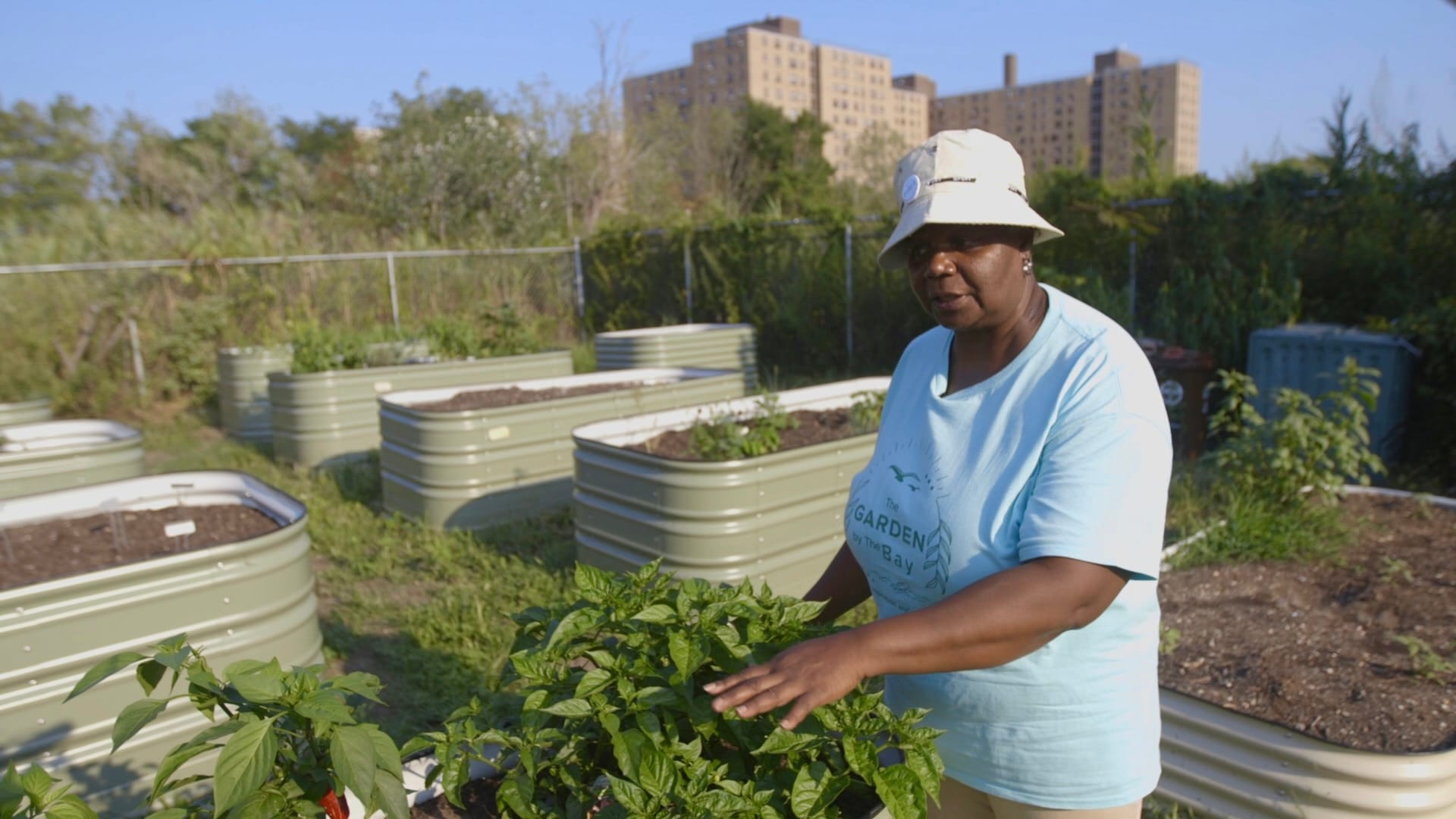
Those who move generally do so only after the economic outlook has deteriorated so much — due to rising insurance costs or the loss of jobs — that they feel they have no other choice.
Residents fleeing climate-fueled disasters tend to be younger, higher income households who can afford to rebuild elsewhere. When these wealthier residents leave, research shows their departure can lower the community’s tax base, leaving the older, lower income households behind with fewer resources to recover and guard against future flooding.
“We live from day to day not knowing what a high tide or hurricane’s going to do to this community. It is very scary,” Rogers said. “But by the grace of God, I ain’t going no place.”
Rogers is president of a community garden, which regularly hosts community events and encourages residents to literally lay down roots.
“People have suffered a lot of trauma here,” Rogers said, citing years of storm damage and neglect from city officials. “So being in a space that is nature centered, we get centered.”
Rogers has fortified the garden by installing raised metal beds, but she dreams of a day when her community finally gets the protection it’s been promised.
“I don't believe it's going to be underwater, even though the scientists say it is,” Rogers said. “And I'm hoping good people with good minds and good hearts look at this community and recognize the potential of what this community can really be.”
Floodlight is a nonprofit newsroom that investigates the powers stalling climate action. Sign up for their newsletter here. New York Focus is an independent nonprofit newsroom investigating power in the Empire State. Sign up for their newsletter here.


